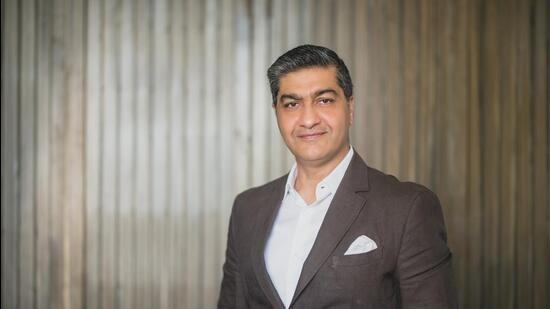Our Terms & Conditions | Our Privacy Policy
‘Homogenisation creates cultural amnesia’ | Latest News India
Dikshu C Kukreja is a leading Indian architect and the managing principal at Delhi-based C.P. Kukreja Architects, one of the country’s most reputed architectural firms. A strong proponent of architecture rooted in its social, cultural and climatic context, he is known for blending contemporary design with local sensitivity. He spoke to HT’s Manoj Sharma about the importance of contextual architecture. Edited excerpts:
 Dikshu C Kukreja is a leading Indian architect and the managing principal at Delhi-based C.P. Kukreja Architects, one of the country’s most reputed architectural firms. (HT Photo)
Dikshu C Kukreja is a leading Indian architect and the managing principal at Delhi-based C.P. Kukreja Architects, one of the country’s most reputed architectural firms. (HT Photo)
How has globalisation influenced the architectural language of Indian cities over the years — are we losing the essence of “place”?
Globalisation has played an important role in expanding the architectural imagination in India. However, in this pursuit, we are rapidly losing the nuances that define our places. Architecture, at its core, must be rooted—it is not just about form, but also about memory, community, and climate. When every city begins to resemble another, we risk erasing the very distinctiveness that makes each Indian city unique.
From Gurugram to Hyderabad, we’re seeing a skyline of glass towers and luxury condos that could belong anywhere. Why do you think Indian developers and architects are increasingly favouring this aesthetic over vernacular forms?
This tendency is a reflection of aspiration, a strong belief that the international aesthetic symbolises success, modernity, and global relevance. Unfortunately, this often comes at the expense of cultural specificity. The faster we realise that true progress lies not in mimicking but in interpreting our own context meaningfully, the more resilient and relevant our cities will become.
In a climate like India’s, local architectural traditions evolved with deep environmental sensitivity. Why are these principles often ignored in contemporary urban design?
It’s not a lack of knowledge but of conviction. Everyone across the ecosystem—from architects and developers to clients and governing bodies—has a role to play. Many traditional principles, evolved over centuries, offer simple, elegant solutions to complex climatic challenges. Yet, in the rush for speed, spectacle, and perceived contemporaneity, they are either forgotten or treated as decorative afterthoughts.
Do you think there is still space in Indian cities to build a new kind of modernism—one that’s global in ambition but rooted in local culture, climate, and history?
There is not only space, but an urgent need. One example from our practice is Ekatma Dham, the redevelopment of the sacred town of Omkareshwar in Madhya Pradesh. The project is conceived not merely as a pilgrimage destination, but as a cultural and ecological intervention that reinterprets spiritual symbolism through contemporary architecture. We’ve drawn from indigenous building traditions, sacred geometry, and regional materials to design spaces that are both evocative and enduring. Projects like these demonstrate how modern architecture in India can speak a global language without losing its native voice.
Growing international collaborations in Indian real estate often bring pre-packaged design templates. How do you negotiate with clients or foreign partners to preserve a more contextual approach?
The key lies in making a case—not just aesthetically, but economically, climatically, and socially—for contextual relevance. We see ourselves not just as service providers, but as cultural interlocutors. We introduce our partners to the stories, materials, crafts, and climates of the place. Often, once they begin to engage with this depth, the design brief itself evolves into something more meaningful than a replication of trends.
What do you see as the cost of this architectural homogenisation—not just visually, but culturally and socially?
When cities lose their distinctiveness, their people lose a part of their identity. Architecture is a living archive—it tells us who we are, where we come from, and how we live together. Homogenisation creates visual fatigue and cultural amnesia. To the next generation of architects, I would say this: Your role is not only to design buildings, but to shape belonging. Learn from the past, listen to the land, and build for the future—with care, with relevance, and above all, with honesty.
[ad_1]
Images are for reference only.Images and contents gathered automatic from google or 3rd party sources.All rights on the images and contents are with their legal original owners.
[ad_2]


Comments are closed.